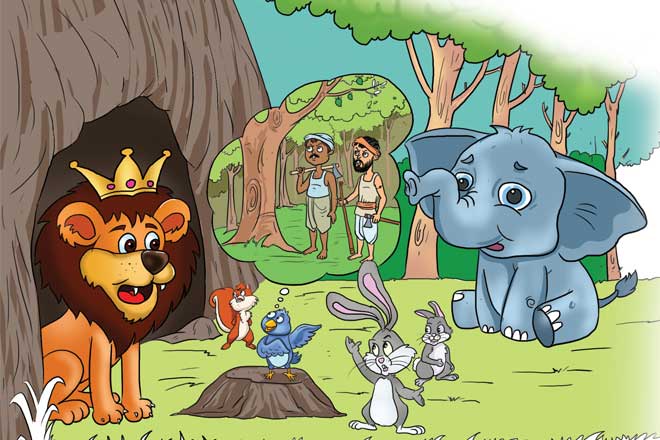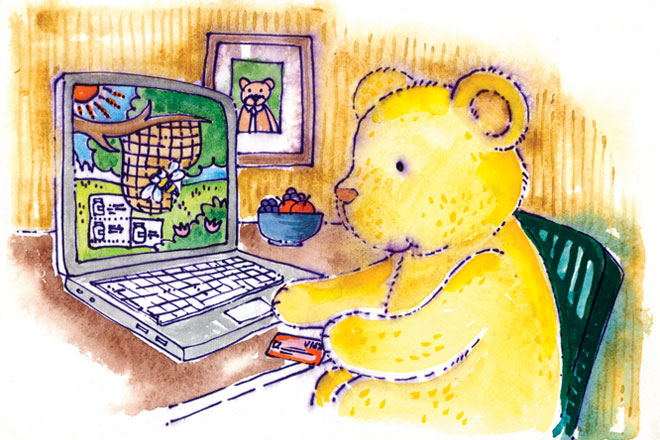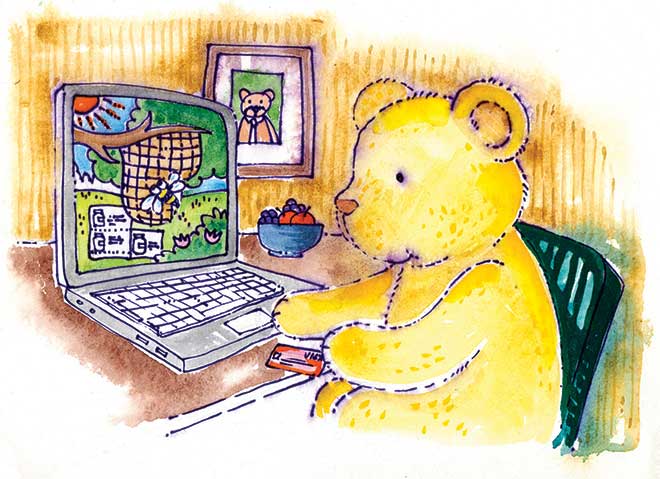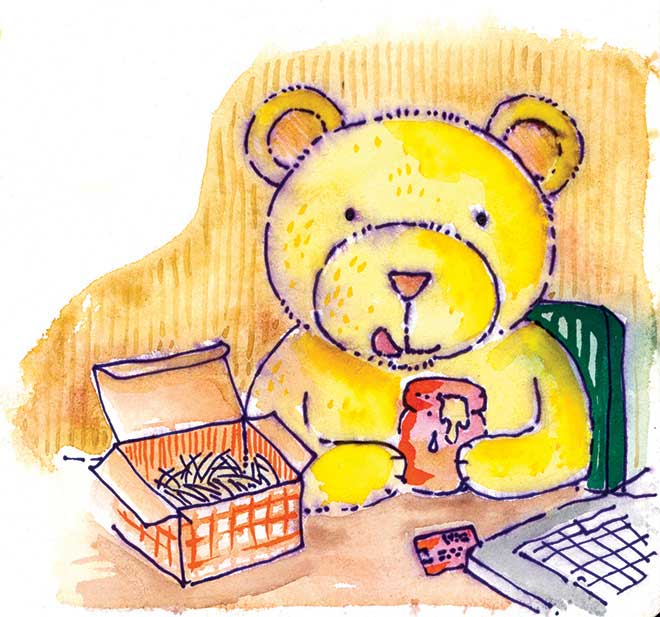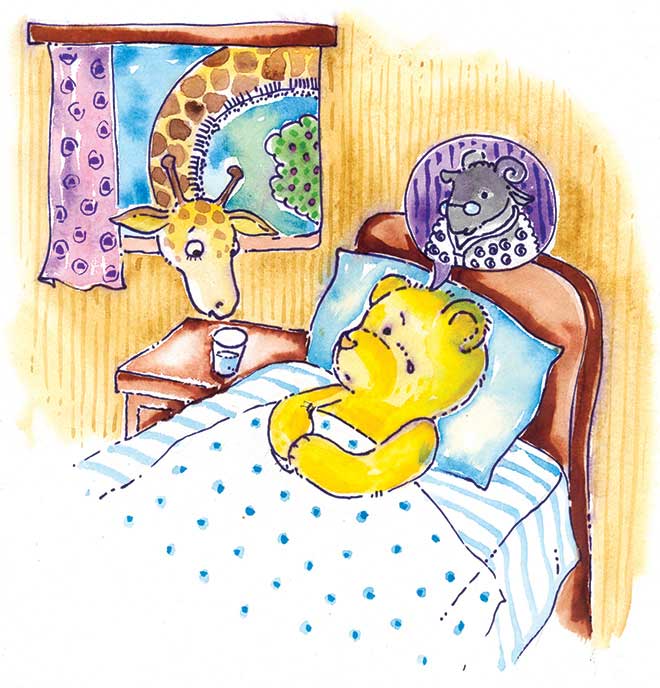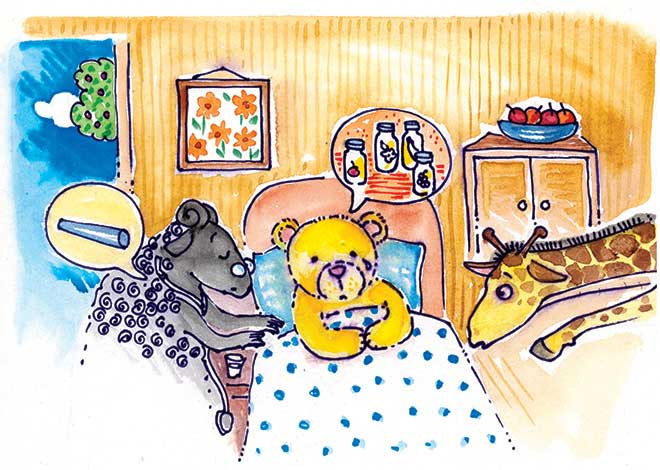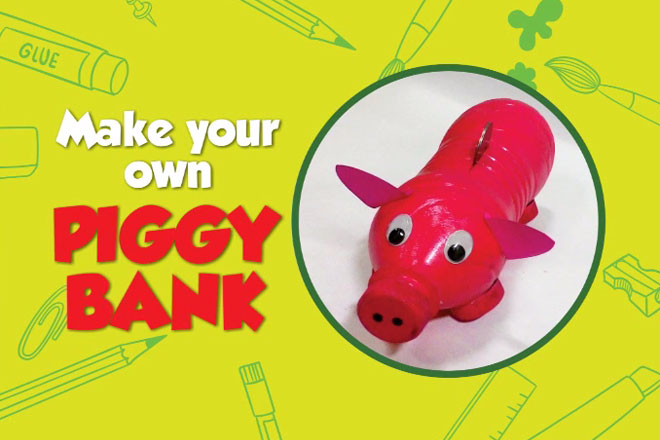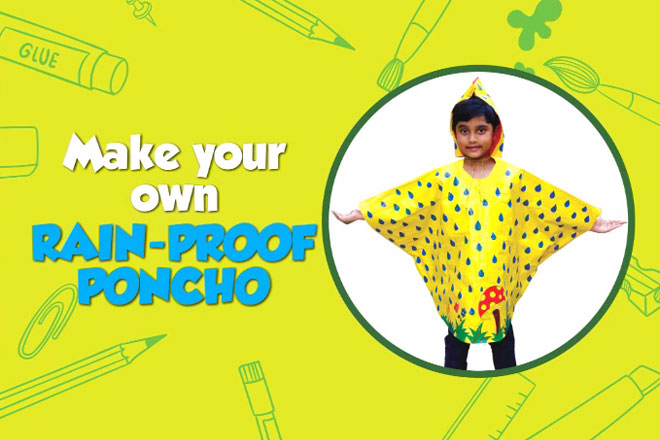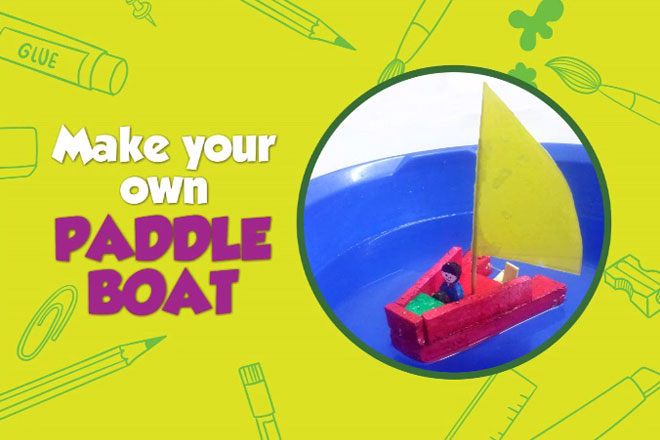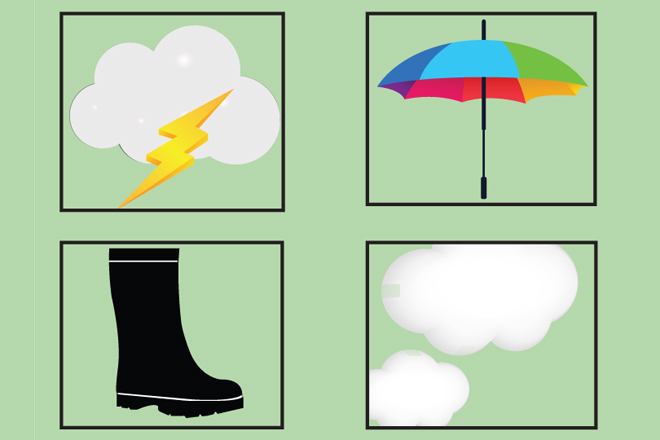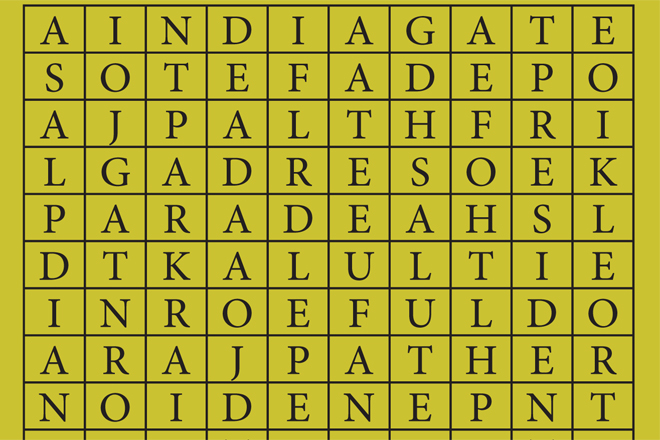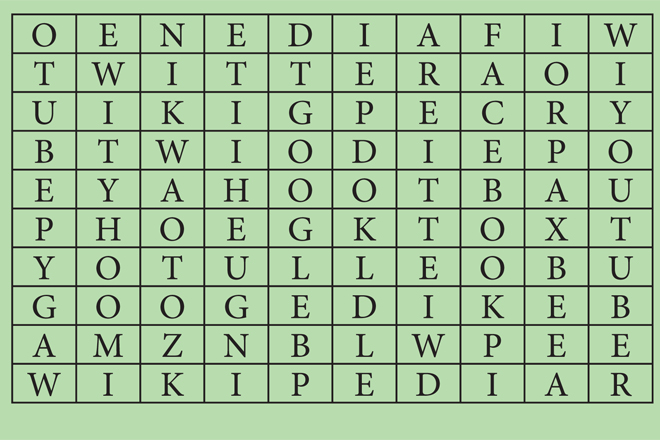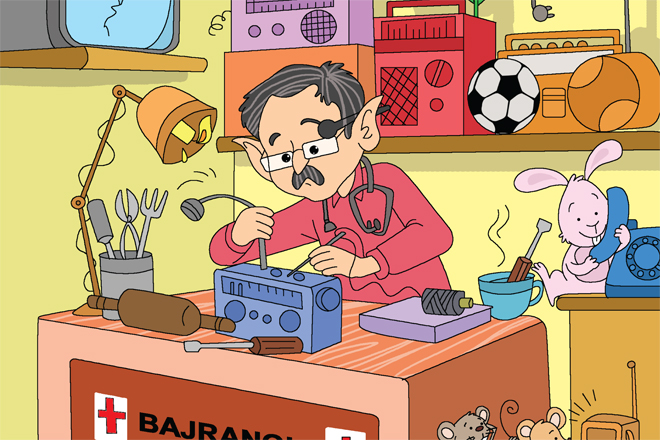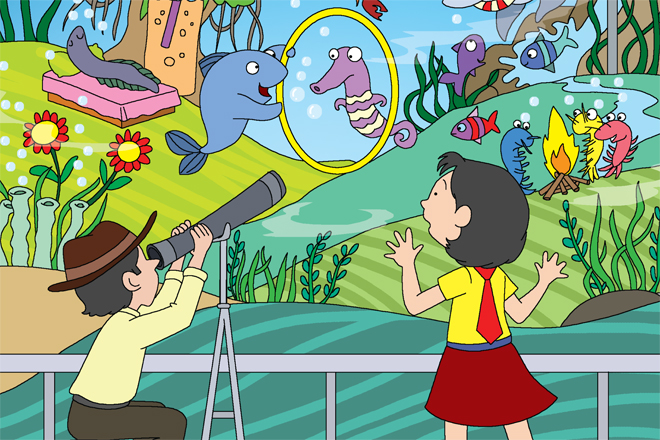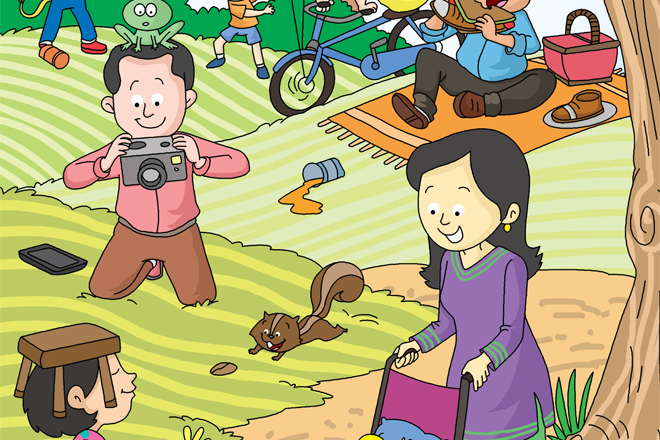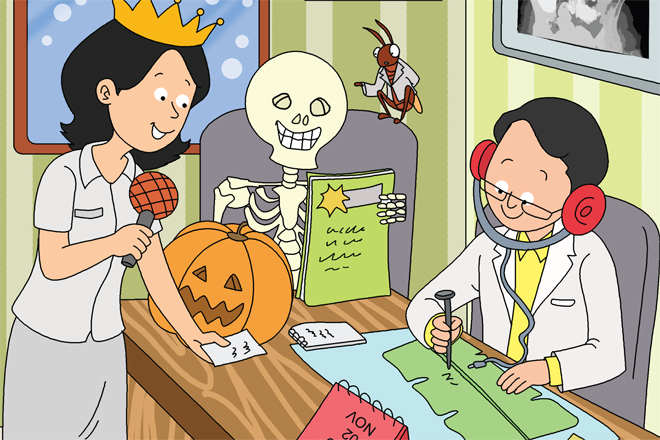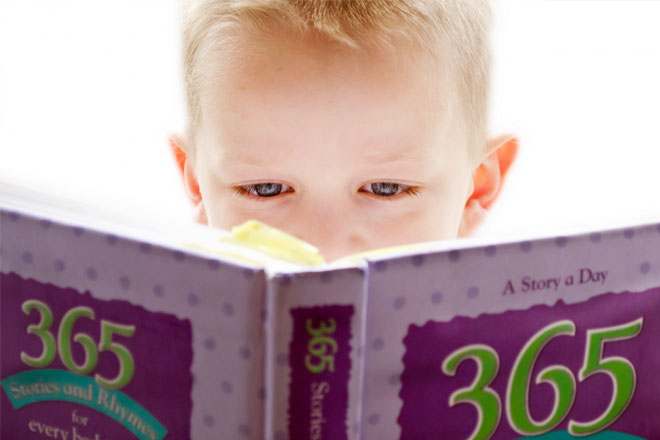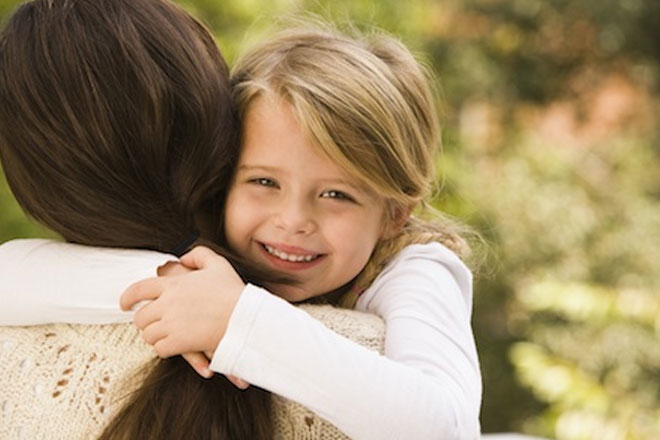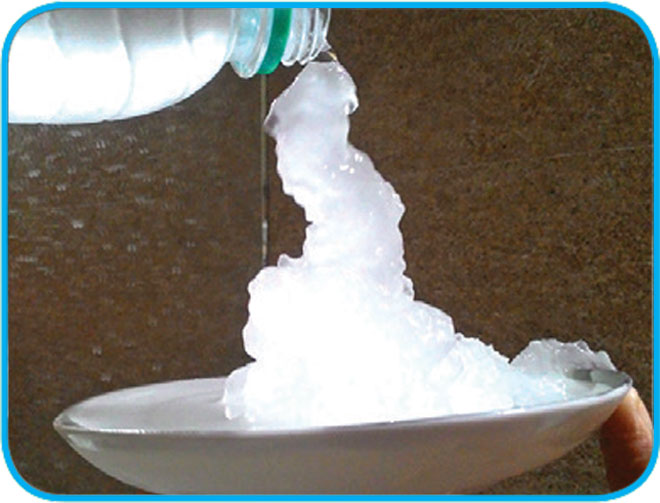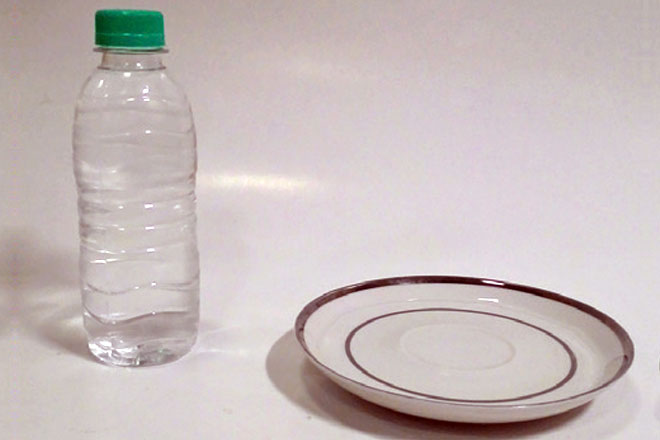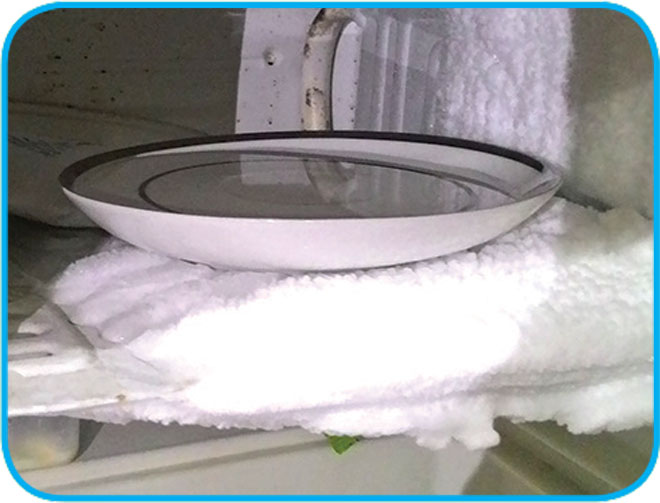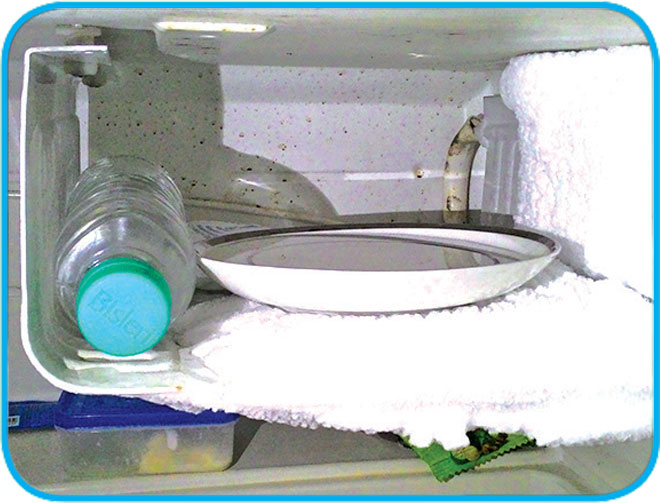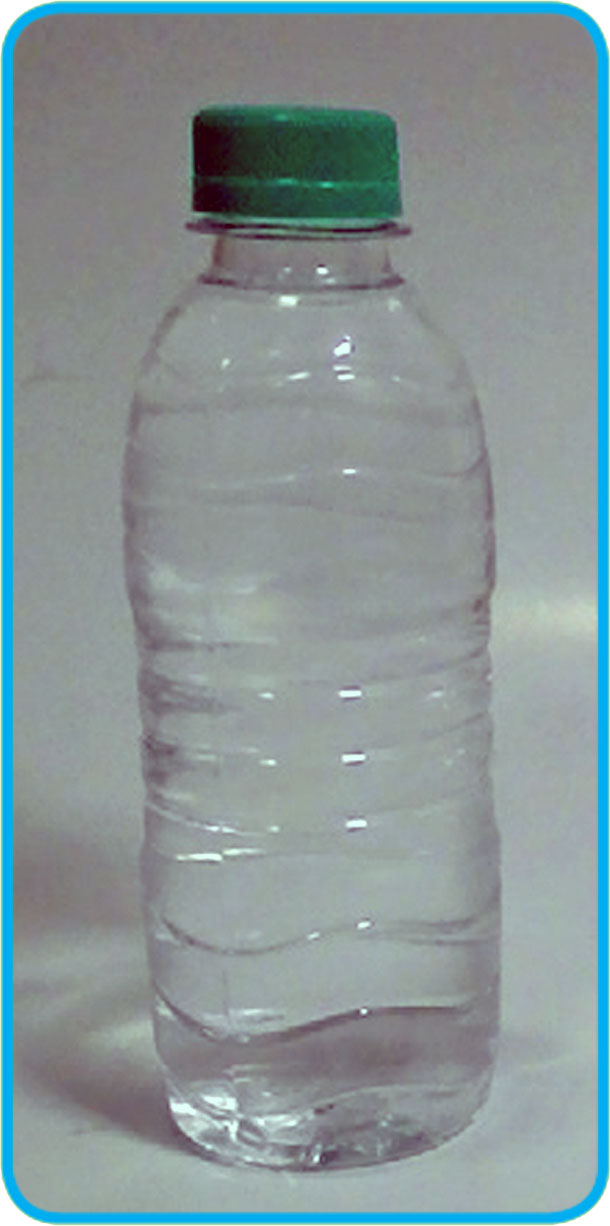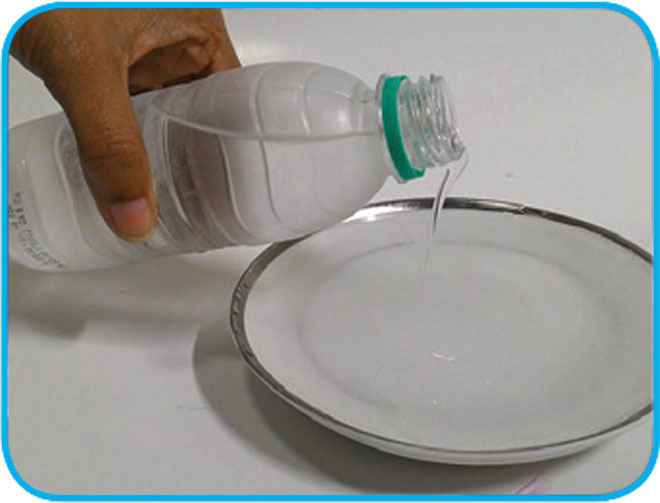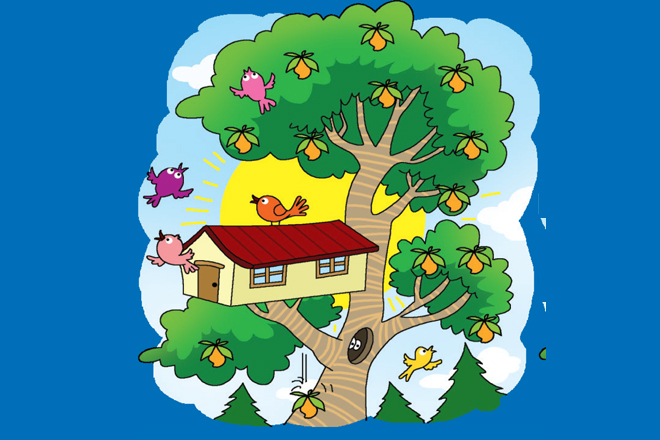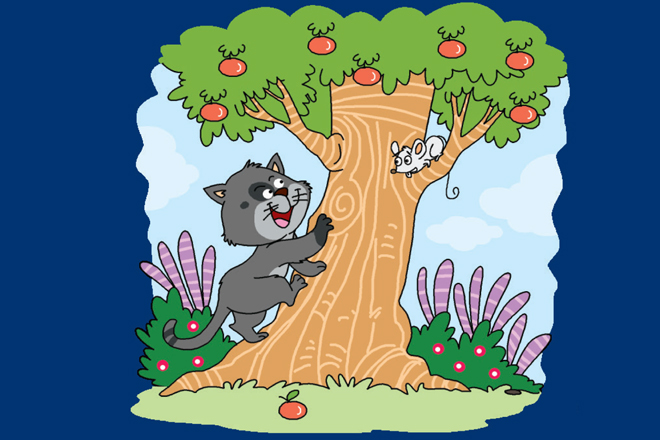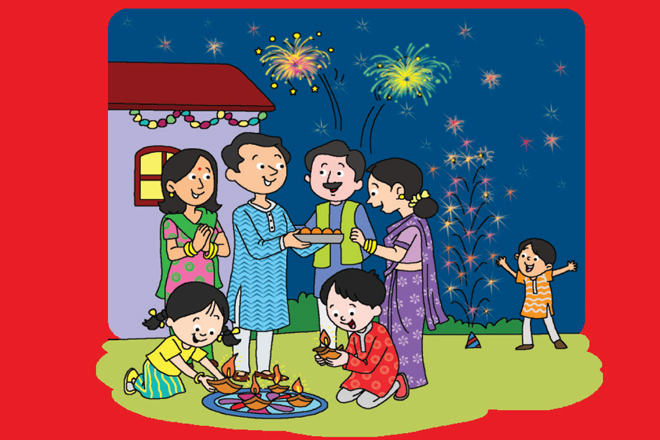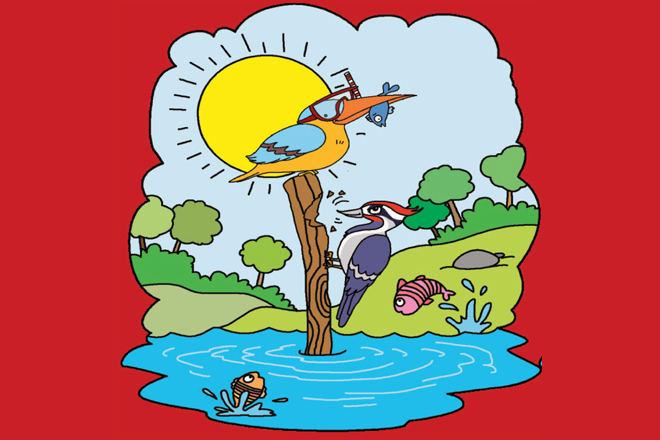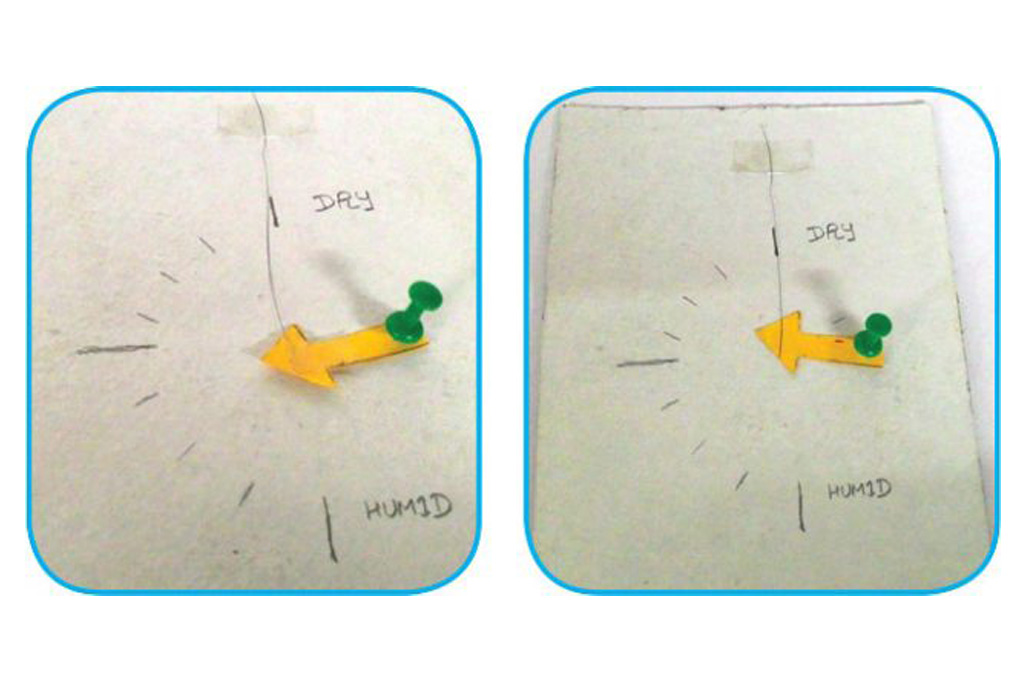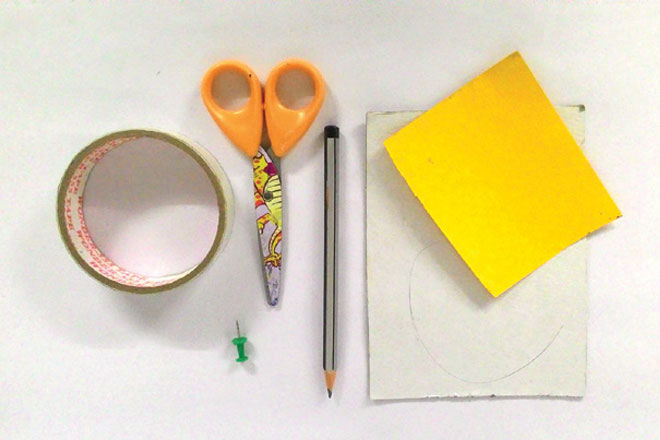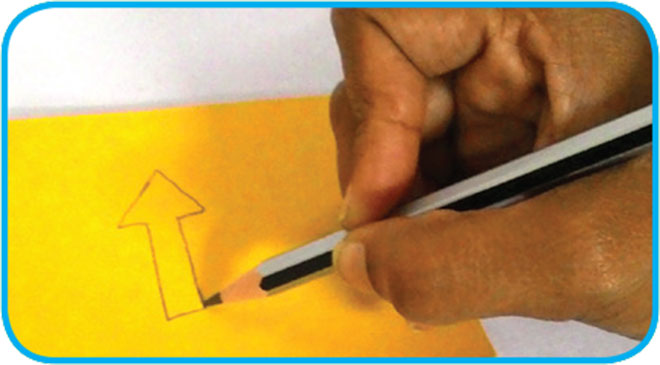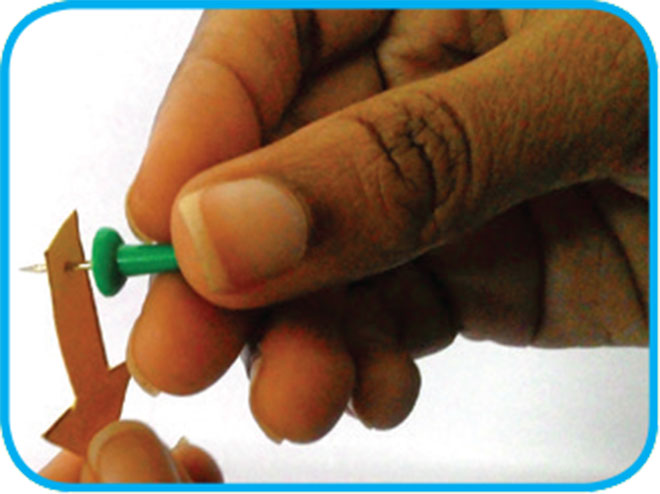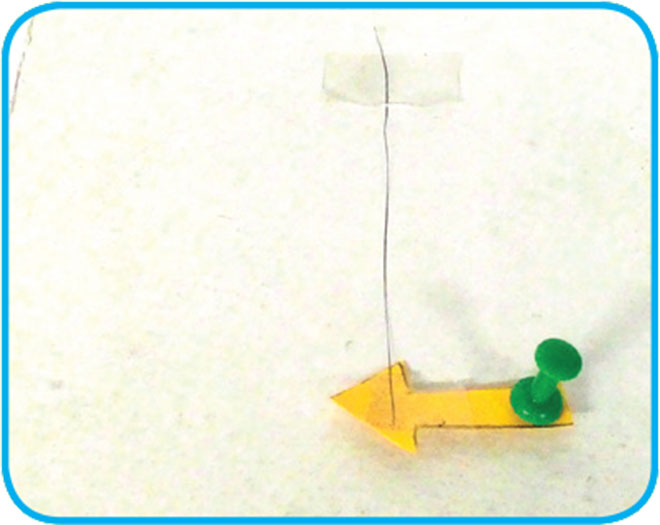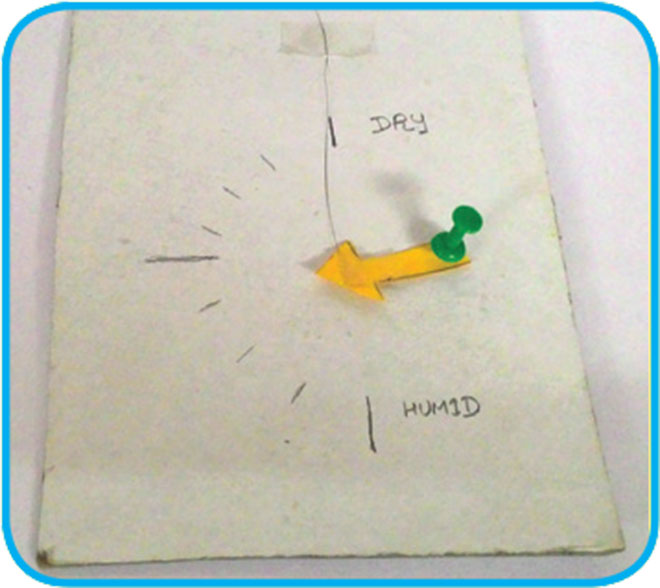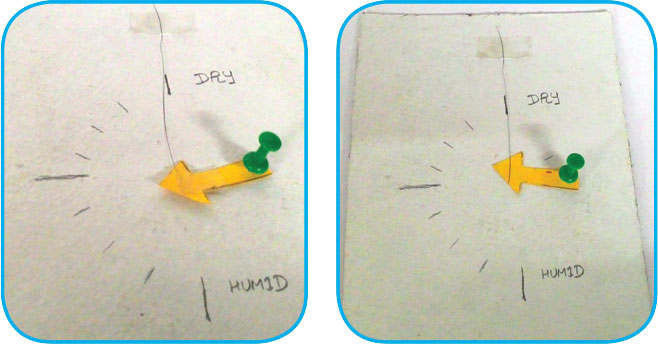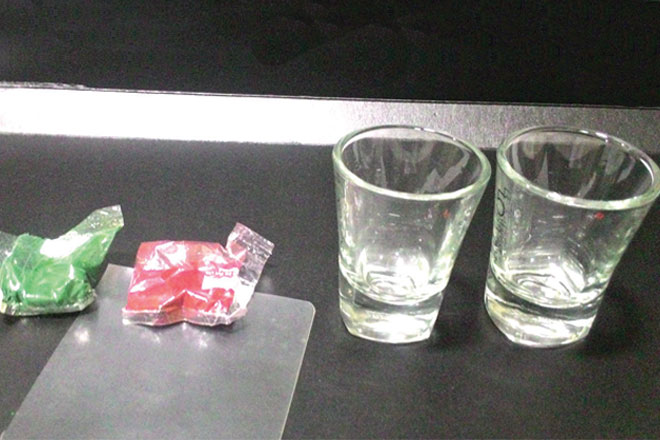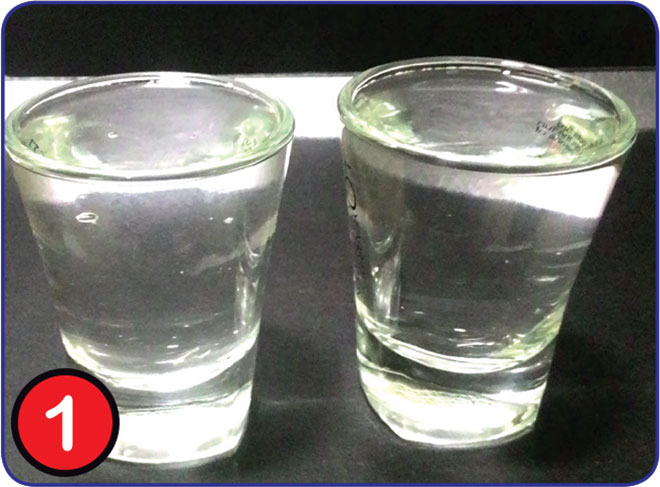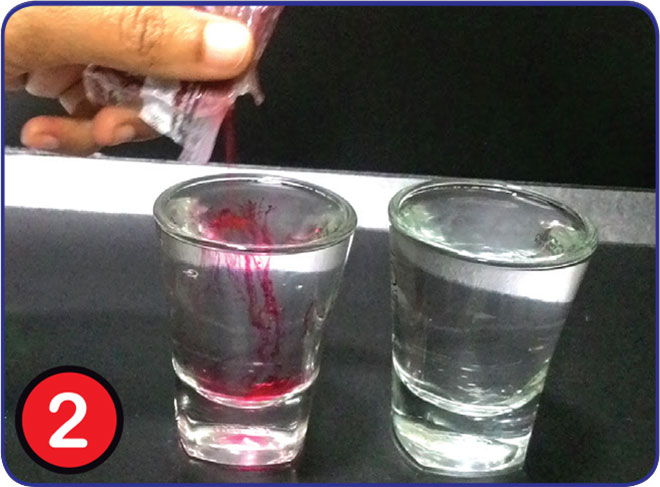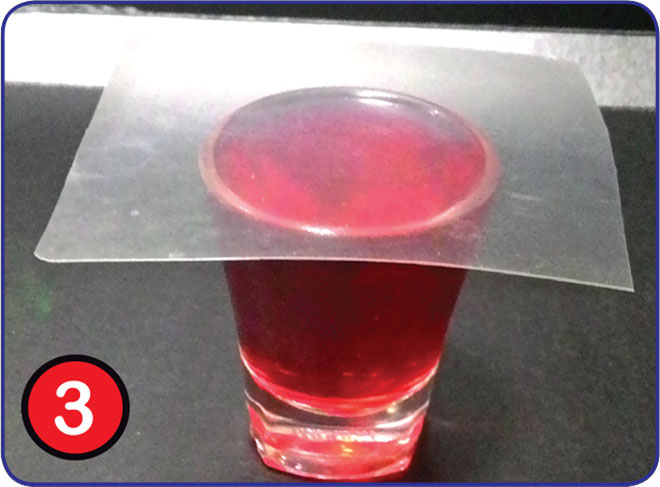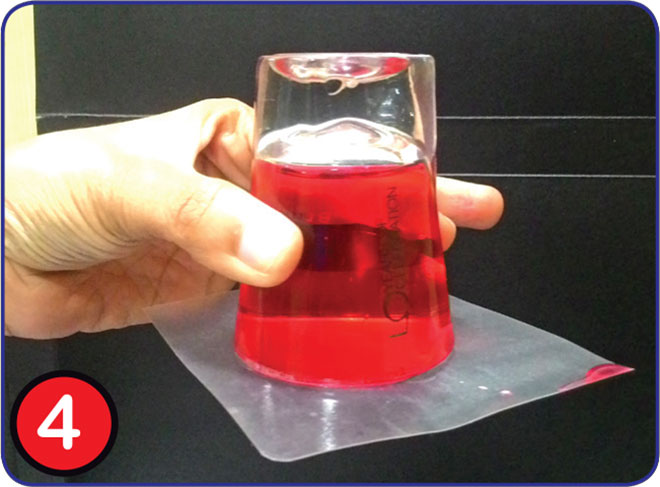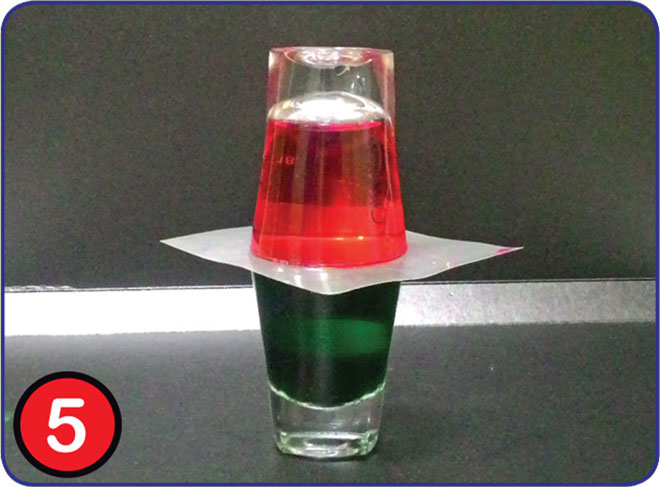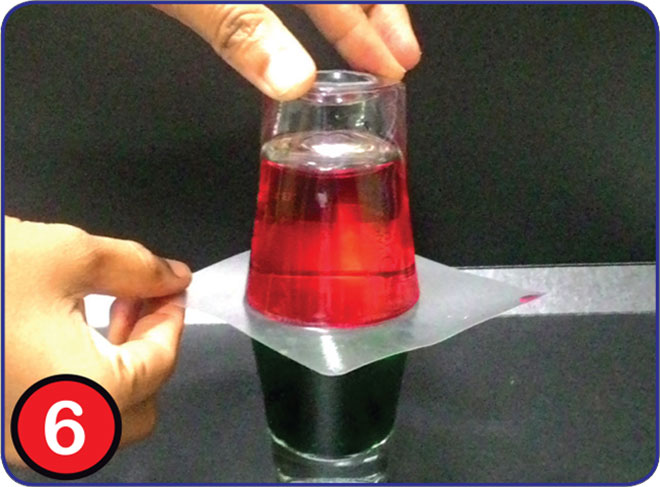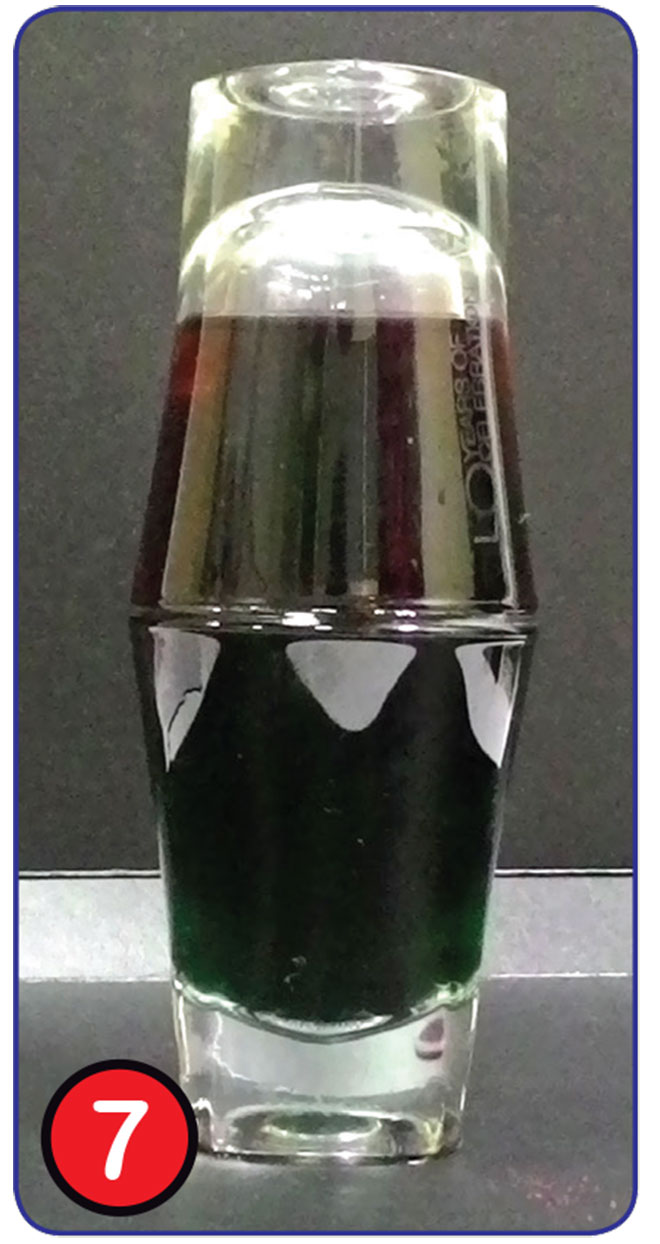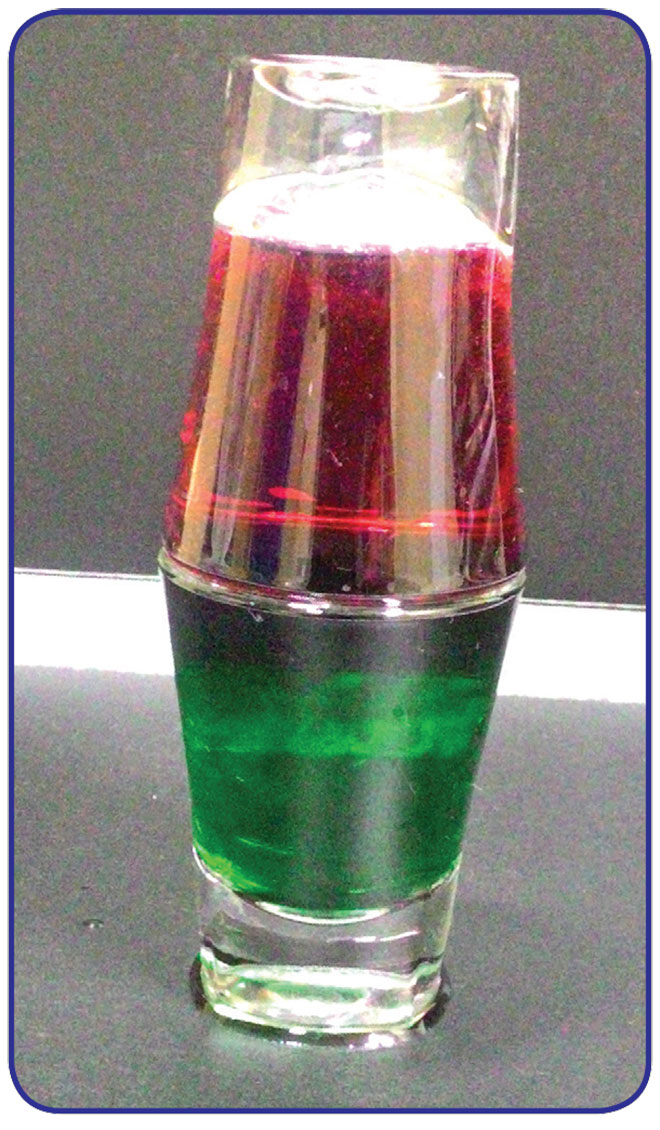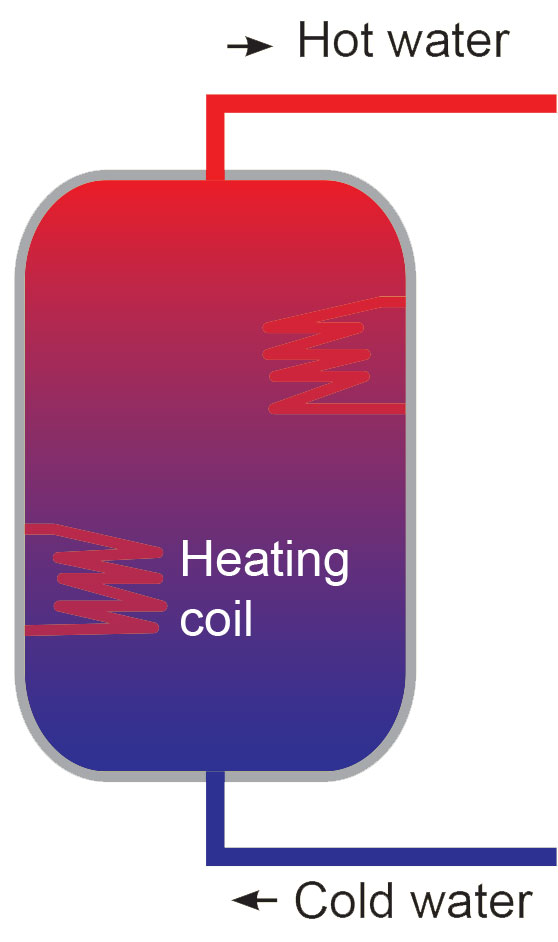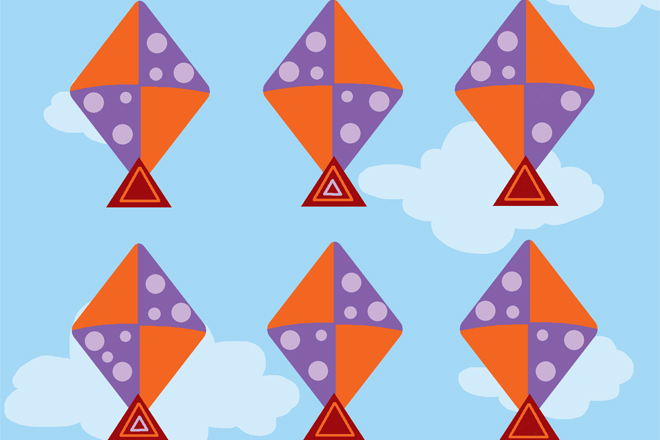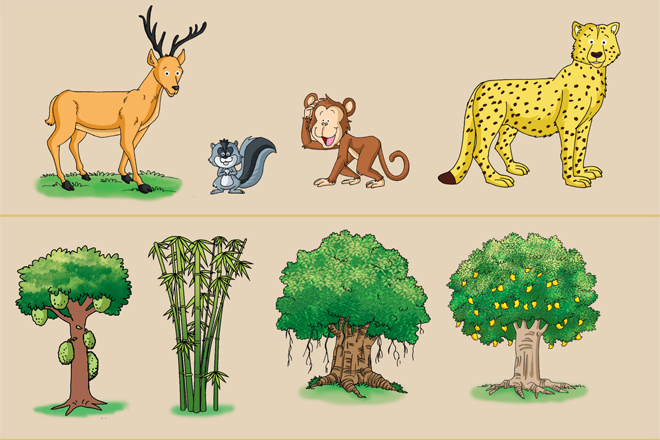Early one morning, when the animals of Lush Meadows were just getting ready for the day, two woodcutters stealthily made their way through the forest.
Mike, the rabbit was the first to spot them. “Look! Those two humans with axes are eyeing our trees,” he alerted his friends.
“Woodcutters! They must have come to cut down the trees in our forest. Our homes will be destroyed. What do we do?” asked Bella, the squirrel.
“Let’s ask King Leo, the lion. He is sure to have some idea,” said Tina, the rabbit.
And so, Mike, Tina, and Bella, along with Ellie, the elephant, and Mini, the bird set off for King Leo’s cave.
“Sir! We are in trouble. Please help us,” Tina called out from outside King Leo’s cave.
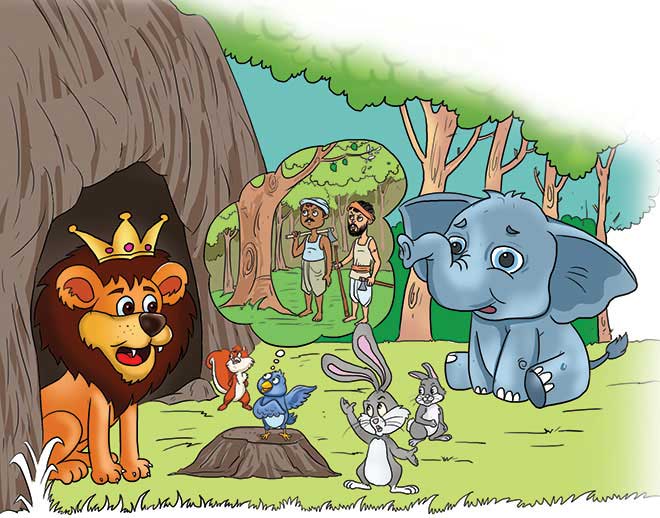
“What’s the matter?” asked King Leo, coming out. “All of you look so worried. If you’ve come to me so early in the morning, it must be something serious.”
“Sir, two woodcutters have entered our forest. They are eyeing the trees that have borne most fruits. We have built our nests in those trees. If they cut those trees, we will be homeless. You must help us!” said Mini worried.
“It is indeed a serious matter. Let’s ask Neel, the cloud and his friends for help,” said King Leo.
The animals brightened up at the idea. Neel surely had the power to help them, they thought. They immediately reached out to him.
“Neel, can you help us? Two woodcutters have entered the forest. If they cut our trees, we will be homeless,” said Ellie.
“Look who’s here!” said Neel amused. “Only the other day, all of you were making fun of our shapes. And now you want our help? Sorry, but we don’t want to help you.” Neel’s friends nodded in agreement.
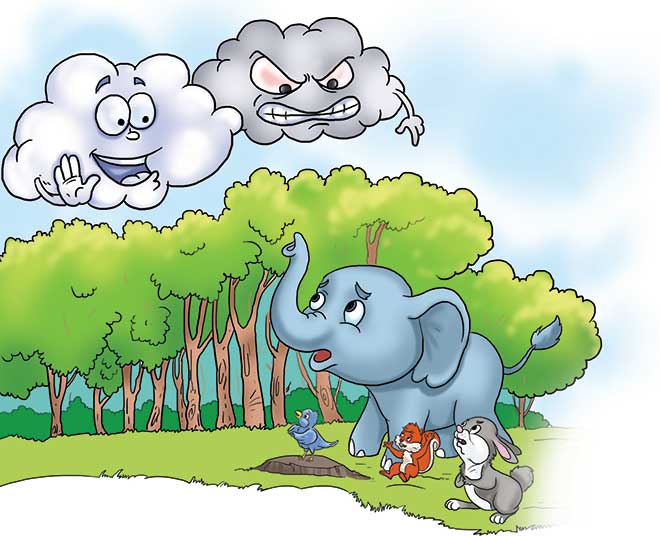
“Please forgive us. We are sorry. We shouldn’t have made fun of you,” said the animals, feeling bad for making fun of the clouds.
Seeing Neel and his friends unresponsive, the animals began to walk back, worried about their homes.
“Wait, friends!” they heard Neel call out to them. “This forest belongs to us as well. While I was angry that you made fun of my friends and me, we cannot turn our backs on you when you are in trouble. So, tell us. How can we help you?” asked Neel.
“Thank you for not deserting us in our time of need, Neel. Please make it rain so heavily that the woodcutters get frightened and are forced to leave the forest,” requested Bella.
“Don’t worry. I’ll take care of it,” said Neel.
He and his friends moved swiftly to drink up as much water as they could from the lake until they became dark and heavy. They then floated over to where the woodcutters were and rained over them heavily, followed by thunder and lightning.
“What’s this? How is it raining at this time of the year?” the woodcutters were taken by surprise. “We won’t be able to go back to our village in this rain. Let’s take shelter under this tree for the time being,” said one woodcutter to the other.
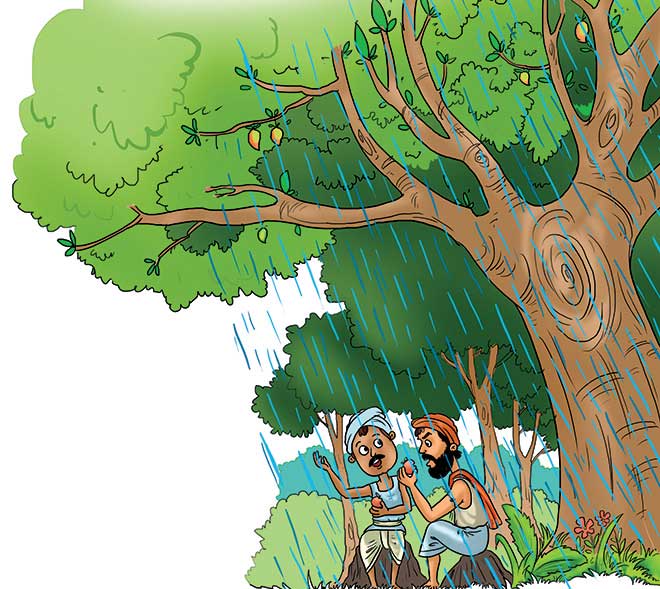
They sat under the tree for a long time. They plucked a few fruits from the tree and started eating them.
“Imagine what would have happened if this tree was not there to give us protection from the rain. We would have got drenched and fallen sick,” said the first woodcutter.
More from Champak: BIG TREE SMALL TREE
“You are right, my friend. We had come to cut down these trees, but those same trees have protected us. They also provide us with oxygen to breathe, and fresh fruits to eat. We have learnt a lesson today: If you cut the branch you are sitting on, it is you who is going to fall down,” said the other. “Anyway, it has stopped raining. Come, let’s go back home.”
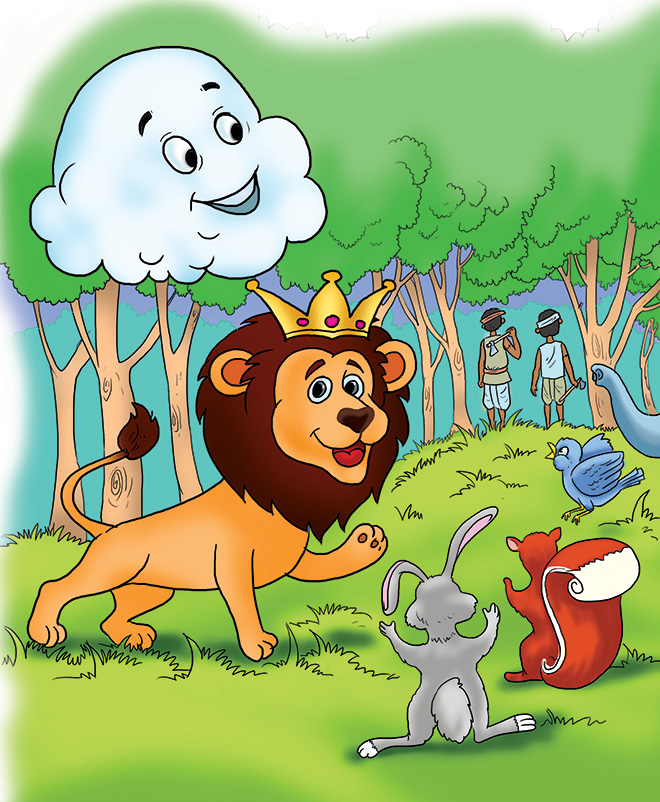
The two woodcutters left Lush Meadows and started walking towards their village. All the animals of the forest came out in the open and started celebrating. They thanked the clouds who had helped save their precious forest. They apologised to Neel and his friends for making fun of them earlier.
“We must remember something—there is nothing shameful about accepting one’s mistake and apologising. And there is nothing better than forgiving those who repent their mistake and giving them a second chance,” said King Leo, addressing everyone.



